Explore Osaka’s Healthcare Pavilion, where tech, nutrition, and regenerative medicine reimagine the future of healthcare and wellbeing.
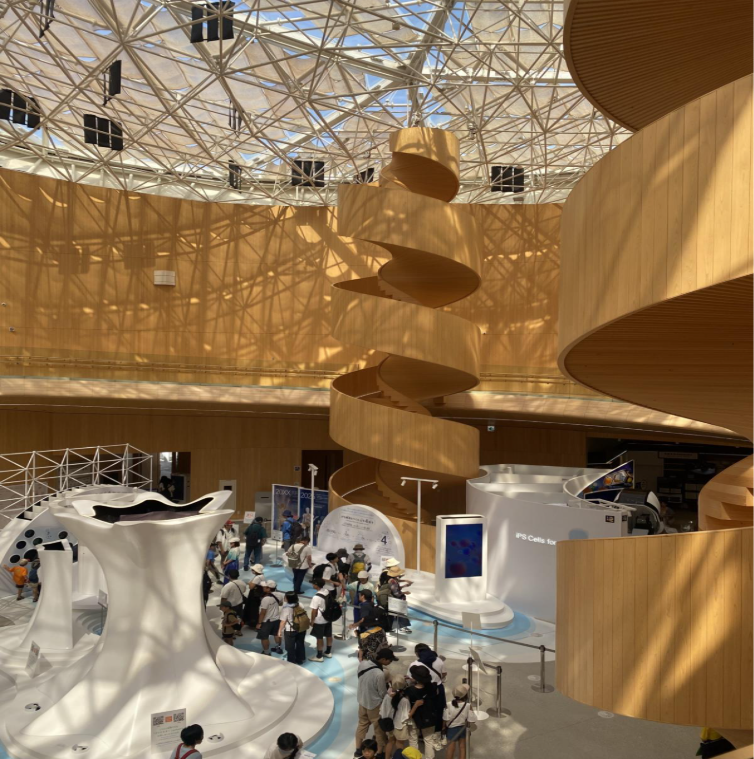
The ‘Nest for Reborn’ atrium viewed from the second floor.
The Osaka Healthcare Pavilion – Nest for Reborn – showcased a holistic vision of health and wellbeing. It invites visitors to imagine empowered, independent lives shaped by technology, intentional design, and early-care concepts.
Stepping inside the pavilion, I entered a body scanning booth that mapped everything from my eyes, skin, teeth, and muscles to my heart. It didn’t get the best score which honestly made me a little self-conscious and concerned, but that’s not the point!
My data was connected to a wrist tag, and I continued my journey to meet my “Future Self”. Based on my personal health information, I was brought to face a digital avatar to see how I might look in 2050 – health, habits, and all.
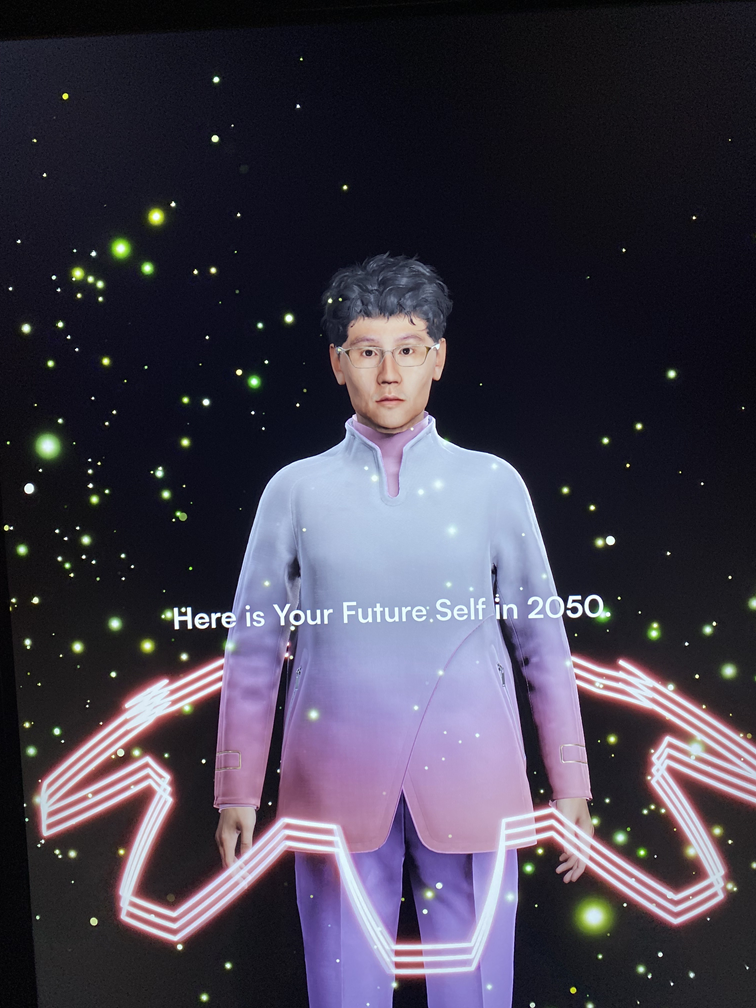
That’s me! Or a digitally created projection of me. Not bad for 57?
The Future of Food is Personalised Nutrition at Scale
83% of Australian consumers say they make healthy food choices now to support their future health. (Mintel Client Access Only)
The pavilion then proceeded to highlight “Future Food,” offering glimpses into how food will be tailored to our needs, and sold to us, in the future. Alongside personalised nutrition, automated sanitation and regenerative food systems took centre stage.
7-Eleven’s Personal Food Stand demonstrated a potential evolution of food retail by dispensing snacks and drinks based on individual health data. It got me thinking about how liberating it’d be for all the guesswork to be taken away when considering the sort of nutrition my body requires. Various exhibitors also brought to life cell-based cultivation technology that I’ve long observed but never witnessed with my own eyes, promising a future where meat will be something to “make at home”.
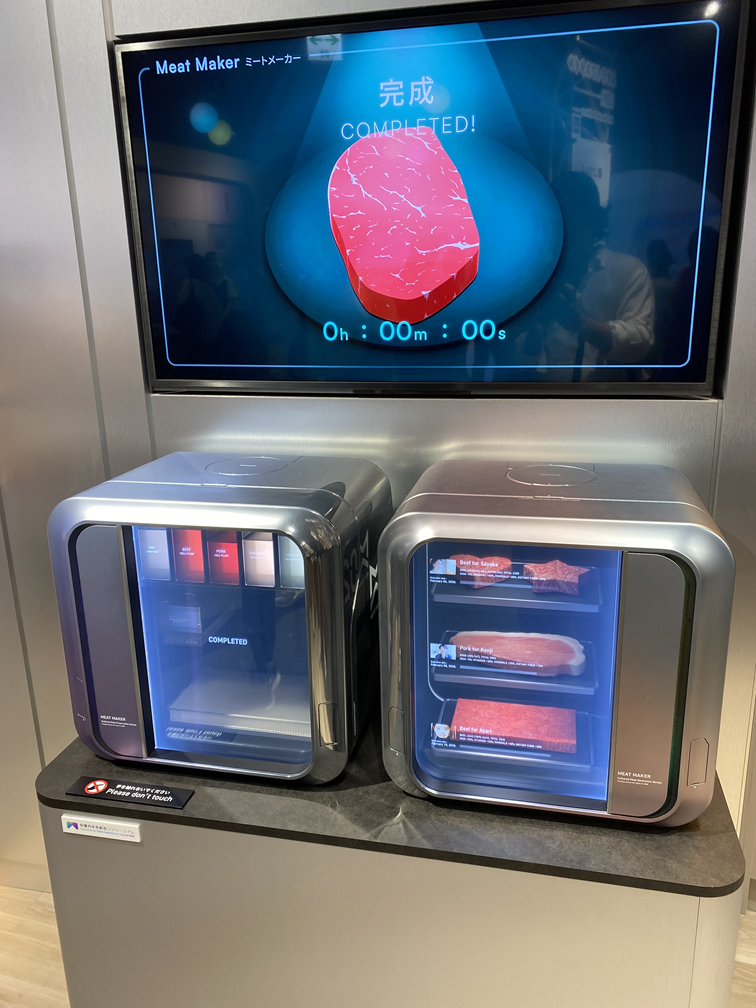
A concept of cell-based meat “growers” that might be found in our future homes.
But with convenience comes reflection. In the future, how will our eating habits — what we eat, where we eat, and how we eat — change as health and wellbeing take priority? What might the broader implications be? If we start printing our own food at home, would we lose important social rituals, such as shared meals, market and restaurant visits, that bring us together? And how will our relationship change with the hands and land that sustain our food systems today?
The Future of Health is Regenerative, Not Reactive
Personalised prevention took center stage in “Future Health,” showcasing how we’re just at the beginning of early detection and predictive analytics, and how it will completely change our quality of life. It won’t just be the wearables we put on that monitor and codify our health metrics, but every room in our AI-powered homes will have interfaces that support and guide how we take care of our bodies and minds.
Rohto Pharmaceutical’s Cell Design Station showcased how regenerative medicine and treatments will one day be created from our cells, instantly tailored to our bodies. It won’t just treat serious illnesses efficiently and precisely; it will also be used for prevention and beauty, thus forever changing the biological limitations of our bodies.
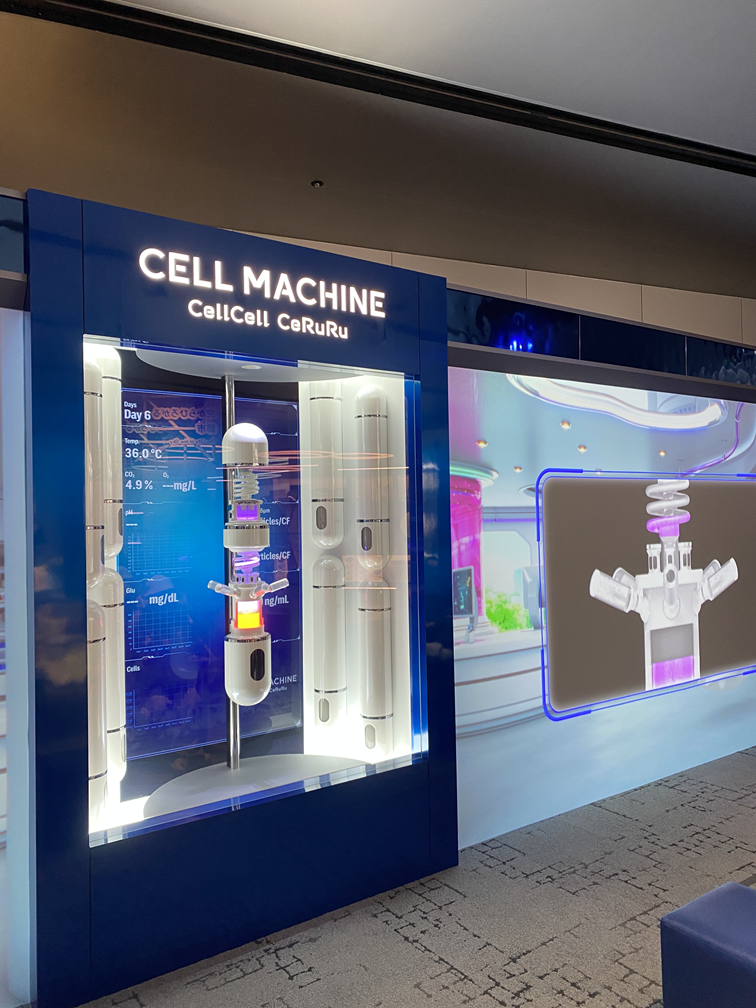
Rohto Parmaceutical’s booth, showcasing how our cells will be enhanced and designed
– through the optimisation of culture conditions and genome editing – for the production of personalised medicine.
Yet achieving this optimistic future depends on consumers’ willingness to share a large amount of personal data with pharmaceutical companies and grocery stores – not just medical history, but continuously monitored information from our sweat, blood, sleep, and more. This is a hurdle that must be acknowledged. But it also presents an opportunity for pioneers in heathcare and technology to distinguish themselves by how they use data thoughtfully, safely, and responsibly – while keeping control firmly in the hands of users.
On the other hand, at Morinaga Milk’s booth, VR experiences used to powerfully highlight the gut-brain-skin link to people of all ages, showing how their research in probiotics can support longevity, skin health, and cognitive wellbeing through simple, easy to incorporate personal habits.

Morinaga’s VR Gut Quest got participants using their hang gestures and brain waves to shoot bad microbiota in the gut
– it was actually pretty fun! (Picture shared by Morinaga Milk)
The future of health will likely be proactive, personalised, and deeply integrated into our everyday lives, but brands will need to help us get ready for it. In a world with rapid technological advancements, many consumers struggle to understand the costs associated with the benefits they stand to receive. Building trust with consumers through transparency and empowerment is of the utmost importance.
The Future of Cities is Built to Thrive, Not Just Survive
34% of Japanese consumers say it is difficult for them to find a place to exercise (Mintel Clients Access Only).
Holistic wellbeing isn’t something we can achieve in isolation, and it’s not a purely individual endeavour. “Future City” revealed how health weaves into the fabric of urban life through infrastructure, education, and imaginative urban planning.
TOKYO SHOSEKI’s “A Learning space Beyond Time and Boundaries” transformed education into an interactive and immersive experience – one that focuses on bringing young minds closer together, no matter where they may located geographically – and closer to our earth as well. It reminded me that the future of healthcare is intricately linked to education. Its importance goes beyond academic proficiency and learning from our past to include fostering empathy, resilience, and curiosity as well.
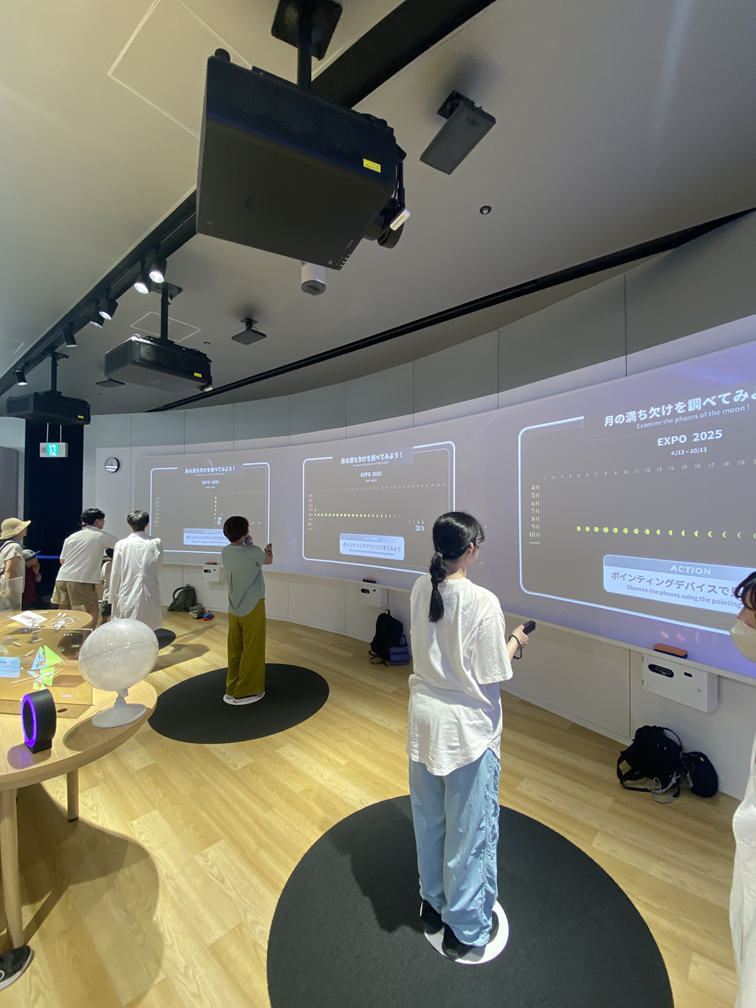
Expo participants experiencing what “learning” might look like in the future: technology
– led, but physically immersive at the same time.
Closing Thoughts on the Osaka Healthcare Pavilion
The future of healthcare will be as much about preserving our humanity as it is about extending our lifespans. Regenerative therapies, AI tutors, health-curated meals, and sustainable urban design all point to a future defined by balance:
- technology and trust,
- efficiency and equity,
- health and humanistic values.
Perhaps the most important lesson of the pavilion is that the future of healthcare isn’t purely about medical advancement; it is educational, social, and human. And the best thing we can do now is to learn how to expand our capacity to care – for ourselves, and for each other.
Explore all of Mintel’s market and consumer research and browse numerous research reports on Mintel Store.
Or sign up to our free newsletter Spotlight to have valuable market and consumer insights delivered directly to your inbox.































